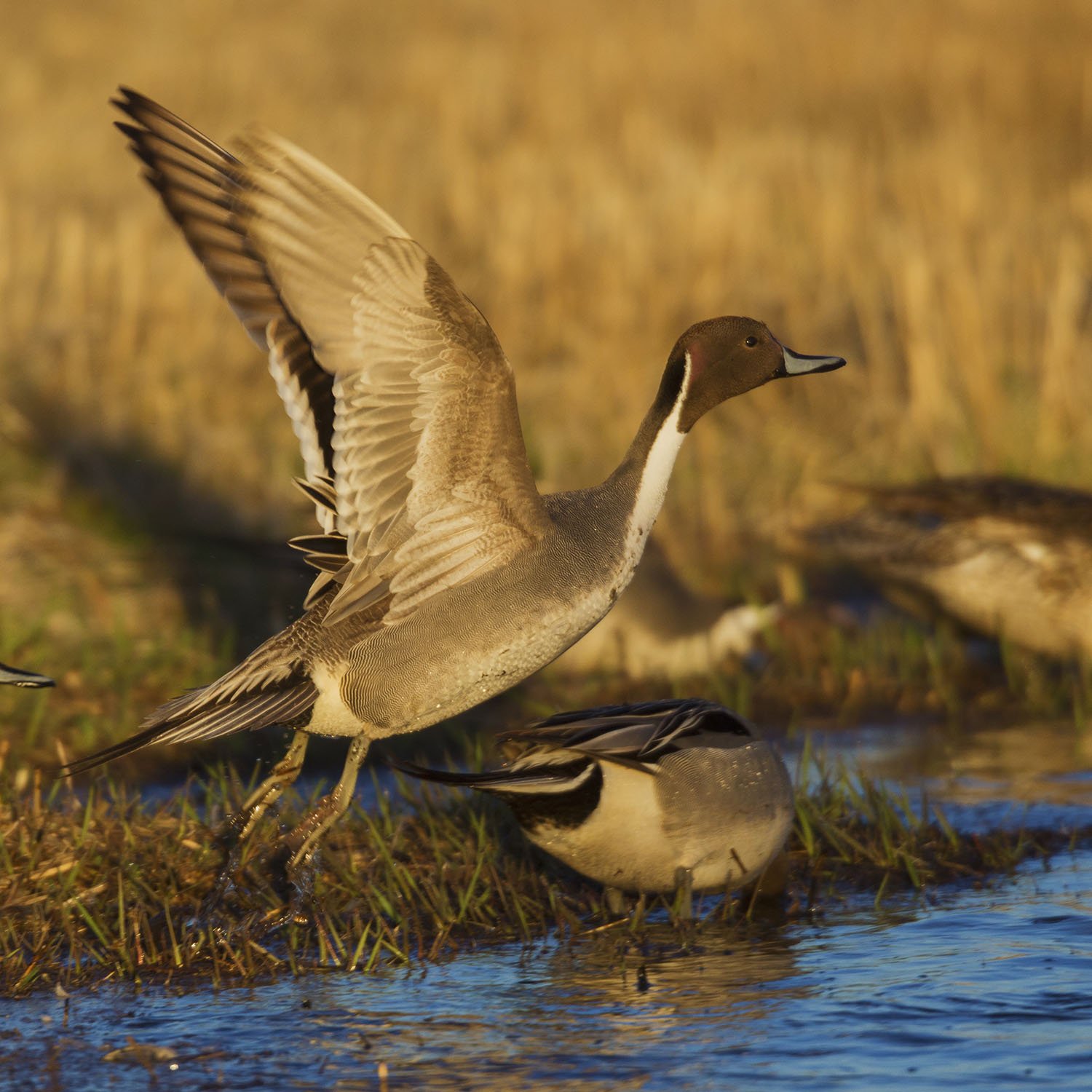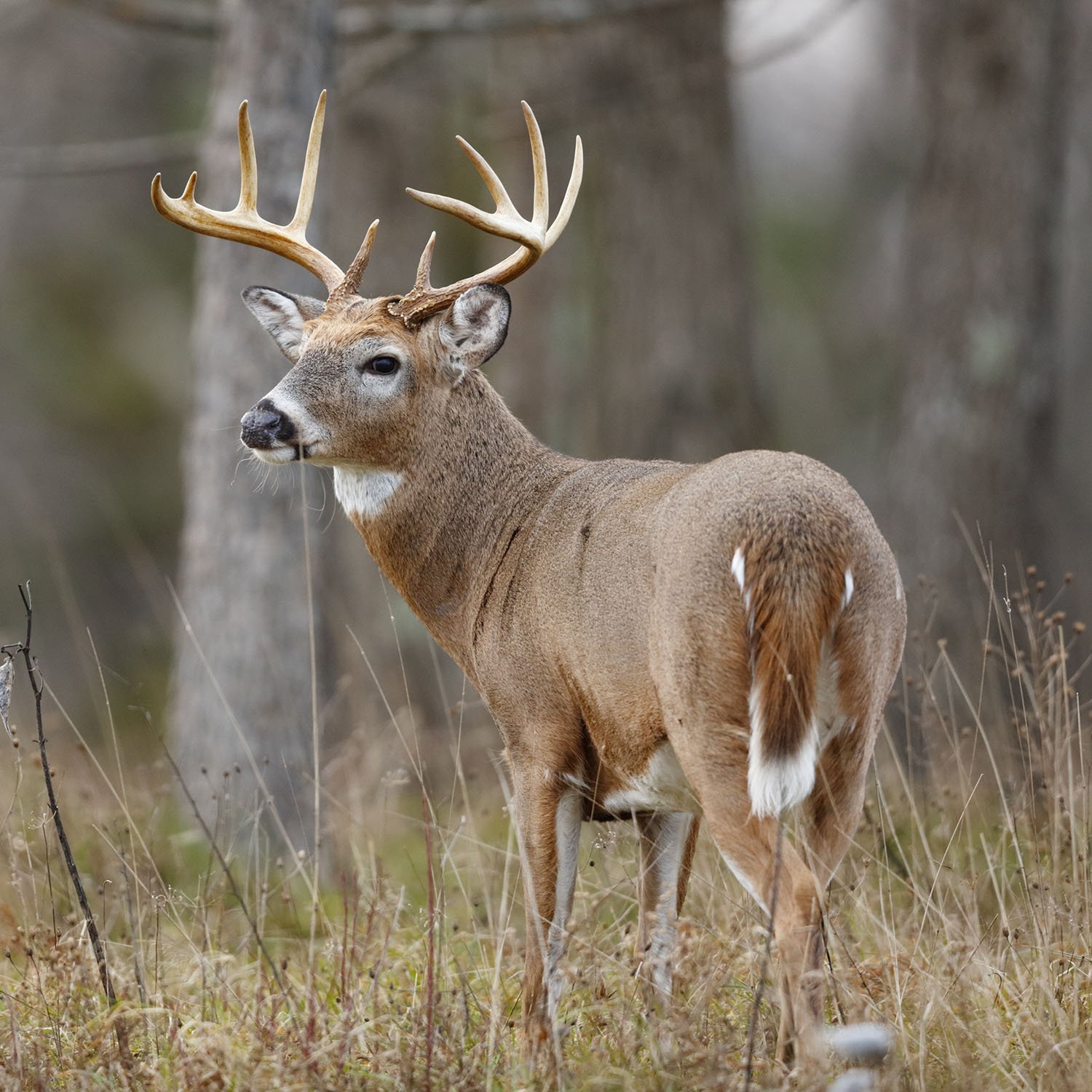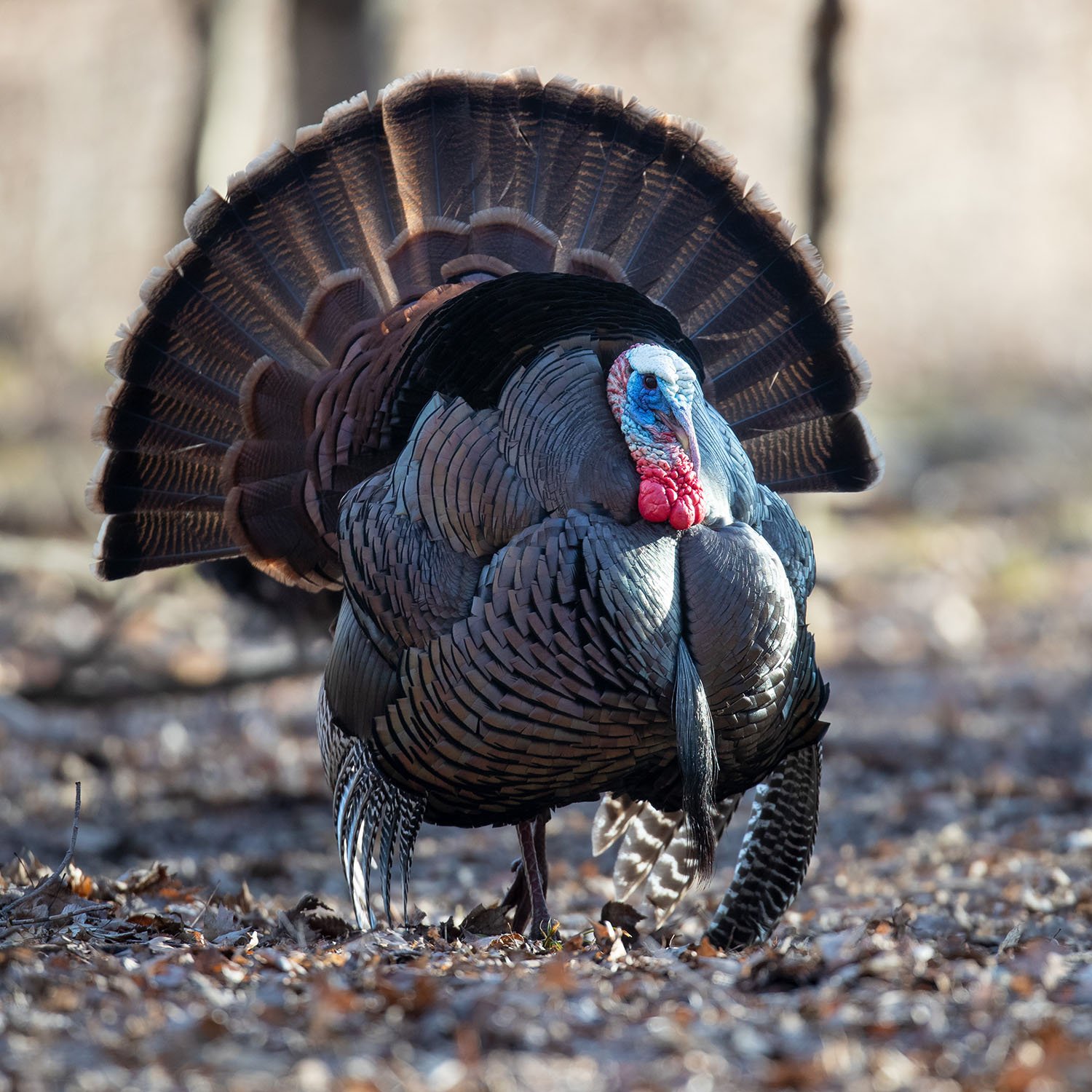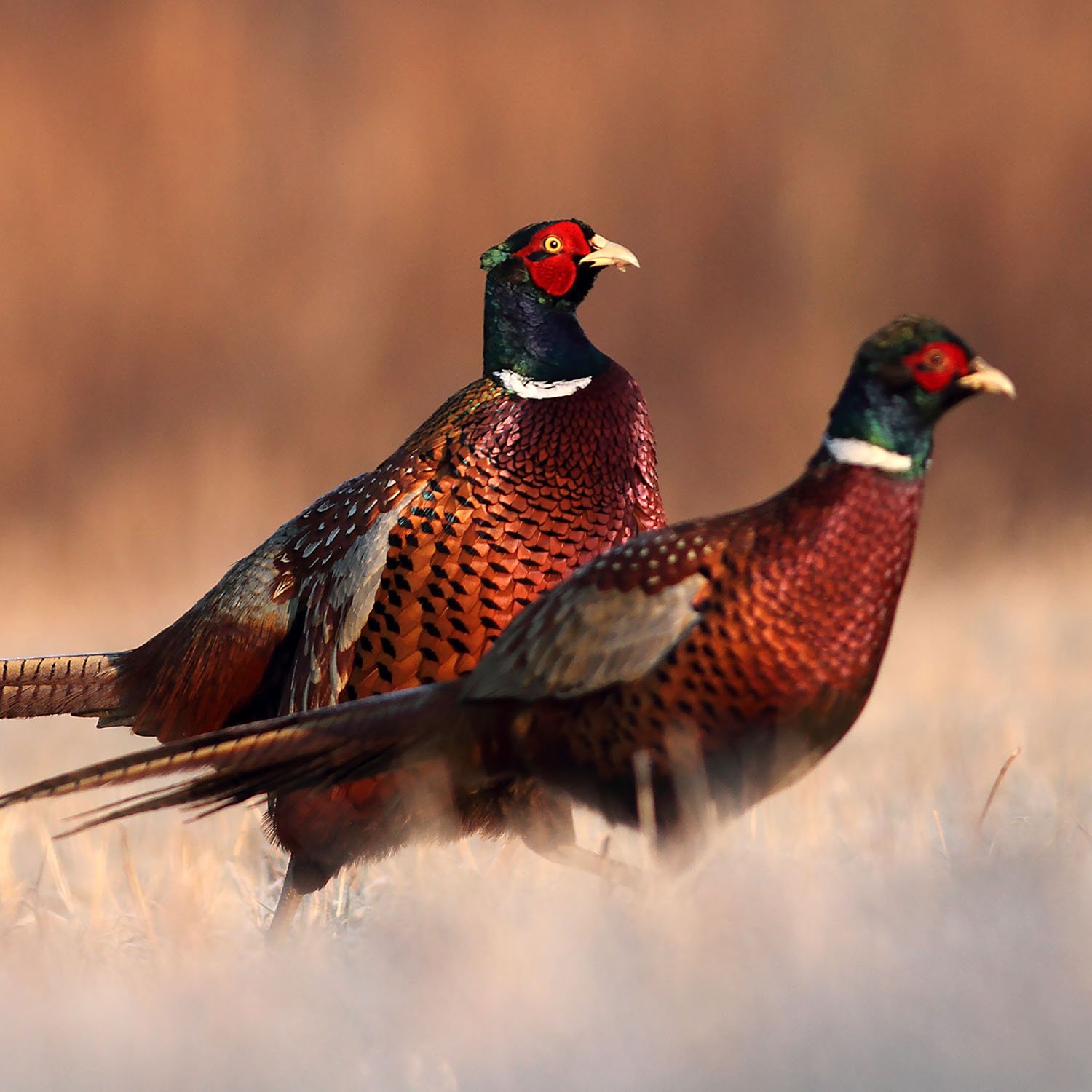Wisconsin Hunting Guide
With plenty of huntable land, affordable tag fees, and dense game populations, Wisconsin offers some of the best hunting in the nation. Residents and nonresidents alike can easily hunt in the state for a variety of game species.
What to Hunt
Wisconsin supports many different popular game species, with its diverse landscape of wetlands and dry areas.

Waterfowl
Wisconsin is home to thousands of small lakes, most of which offer significant waterfowl hunting opportunities. The area around the Mississippi river is notable for its dense waterfowl populations. Hunters may target teal, goose, mourning dove, woodcock, scaup, coot, moorhen, rail, snipe, and more. There are several subspecies of geese, including Canada geese, white geese, brant, and greater white-fronted geese. Season bag limits are typically six ducks (divided across specific subspecies of duck), five mergansers, and 15 coot per day.

Deer
Wisconsin offers significant deer hunting, with very affordable tags for non-residents. Whitetail deer are available over seven million acres of land available for public hunting. Seasons are divided into archery and crossbow, youth gun, gun season for hunters with disabilities, general gun, muzzleloader, and antlerless-only. Active duty military service members are able to purchase a bonus antlerless deer harvest authorization, even after these tags are sold out.

Turkey
Wisconsin’s landscape features a variety of habitats ideal for Eastern turkey propagation. They can be found across the state, wherever food sources are located. Spring tags are given through a drawing system, and applications are generally due December 10. Fall turkey harvest authorizations can be purchased beginning in August. The spring bag limit is one bearded turkey per tag, and the fall bag limit is one turkey of any sex or age per tag.

Pheasant
Most of Wisconsin’s pheasant hunting is found in the west-central and southeastern regions of the state. Wisconsin offers an interactive mapping tool where hunters can discover properties where pheasants are stocked. Hunters targeting pheasants are required to get a pheasant stamp, which supports habitat management for pheasants. Pheasant season usually runs from April through June in the spring, and September through January in the fall, depending on the zone. There are spring days for youth turkey hunting also.
Other Wisconsin game species include: Bear, Early Teal, Canada goose, Snow/blue geese, Ross' geese, Wild ducks, Mergansers, Coot and Moorhen, Sora and Virginia rail, Snipe, Woodcock, Mourning Dove, Cottontail Rabbit, Squirrels (gray and fox), Bobwhite quail, Ruffed grouse, Hungarian partridge, Crow, Coyote, Red Fox, Gray Fox, Bobcat, Raccoon, Opossum, skunk, weasel, snowshoe hare and woodchuck listed in the "Hunting "Seasons" section.
Where to Hunt
With six million acres of public lands, there are hunting opportunities across the entire state of Wisconsin.
State Parks and Forests
State parks and forests in Wisconsin offer limited hunting and trapping opportunities throughout the year. Certain parks may have restrictions on firearm type or species of animal. It is important to check the individual area’s regulations before planning your trip.
State Wildlife Areas
Wisconsin maintains dozens of state wildlife areas. These areas are open to hunting and other outdoor recreational activities.
State Natural Areas
State Natural Areas (SNAs) are designed to protect Wisconsin’s native landscape. These areas total 406,000 acres and are owned by the state and its many partners, including land trusts, local and county governments, and private citizens. Hunting is allowed on many of the SNAs.
Voluntary Public Access
The Voluntary Public Access and Habitat Incentive Program (VPA-HIP) offers financial benefits to private landowners who open their land for hunting. By enrolling in this program, landowners qualify for funds and aid in maintaining their property.
The Turkey Hunting Access Program (THAP)
The Turkey Hunting Access Program (THAP) is similar to the VPA-HIP, but only turkey hunting is allowed on these properties.
Licensing Fees
A hunting license is required for all hunters over the age of 10. Note that the fees associated may vary based on the hunter’s age, method of take, and game species. There are also discounts available for first-time license buyers.
| License | Resident | Nonresident |
|---|---|---|
| Small Game | $18.00 | $85.00 |
| Waterfowl Stamp | $12.00 | $12.00 |
| Pheasant Stamp | $10.00 | $10.00 |
| Gun Deer | $24.00 | $160.00 |
| Spring Turkey License | $15.00 | $60.00 |
| Fall Turkey License | $15.00 | $60.00 |
| Trapping | $20.00 | $150.00 |
Hunter Education
Anyone born on or after January 1, 1973 is required to successfully complete a hunter education course before receiving a hunting license in Wisconsin. This course is available as an online-only class, a blend of online and in-person learning, or entirely in-person. There are no age restrictions on Wisconsin hunter education courses.
Youth Hunting
Wisconsin offers special hunting days for wild turkey, white-tailed deer, and waterfowl. These hunts are available to residents and non-residents 15 years of age and younger. Appropriate permits and licenses are required to participate in youth hunts. An adult age 18 or older must accompany each youth hunter. One adult cannot supervise more than two hunters at a time.
Trapping
considered furbearing mammals: beaver, fisher, otter, bobcat, coyote, grey fox, red fox, raccoon, mink, and muskrat. Each of these species are subject to their own restrictions and regulations. Be sure to familiarize yourself with Wisconsin’s trapping laws before planning a hunt.
The following species are considered furbearing mammals: beaver, fisher, otter, bobcat, coyote, grey fox, red fox, raccoon, mink, and muskrat. Each of these species are subject to their own restrictions and regulations. Hunters are required to check dry and water sets at least once each day and remove animals inside. Submersion sets must be checked within four days of last trending the set, and there are no mandatory checking requirements for under ice sets.
Wisconsin Hunting Seasons
| Game | Season Begins | Season Ends |
|---|---|---|
| Deer* | Sep 16 2023 | Jan 7 2024 |
| Bear* | Sep 6 2023 | Oct 10 2023 |
| Elk* | Oct 14 2023 | Dec 22 2023 |
| Early Teal* | Sep 1 2023 | Sep 9 2023 |
| Canada goose* | Sep 1 2023 | Sep 15 2023 |
| Goose* | Sep 16 2023 | Jan 2 2024 |
| Ducks* | Sep 16 2023 | Dec 12 2023 |
| Mergansers | Sep 16 2023 | Dec 12 2023 |
| Coot and Moorhen* | Sep 16 2023 | Dec 12 2023 |
| Sora and Virginia rail | Sep 1 2023 | Dec 12 2023 |
| Snipe | Sep 1 2023 | Dec 12 2023 |
| Woodcock | Sep 23 2023 | Nov 7 2023 |
| Mourning Dove | Sep 1 2023 | Nov 29 2023 |
| Wild Turkey* | Apr 15 2023 | May 30 2023 |
| Sep 17 2023 | Jan 7 2024 | |
| Cottontail Rabbit* | Sep 16 2023 | Feb 29 2024 |
| Squirrels (gray and fox) | Sep 16 2023 | Feb 29 2024 |
| Pheasant | Oct 14 2023 | Jan 7 2024 |
| Bobwhite quail | Oct 14 2023 | Dec 6 2023 |
| Ruffed grouse* | Sep 16 2023 | Jan 7 2024 |
| Hungarian partridge | Oct 14 2023 | Jan 7 2024 |
| Crow | Sep 16 2023 | Nov 16 2023 |
| Jan 19 2023 | Mar 20 2023 | |
| Coyote | no closed season | no closed season |
| Fox, red and gray | Oct 16 2023 | Feb 29 2024 |
| Bobcat | Oct 16 2023 | Feb 29 2024 |
| Raccoon | Oct 16 2023 | Feb 29 2024 |
| Opossum, skunk, weasel, snowshoe hare and woodchuck | no closed season | no closed season |
*Hunting dates for this species may vary by zone, method of take, or subspecies of animal. Visit the state’s website here to find out more.
Disclaimer: The information provided here is not to be construed as legal advice or acted upon as if it is legal advice: it is provided for informational purposes only. While we strive to provide accurate, up-to-date content, we cannot guarantee the accuracy, completeness, or currency of the information.